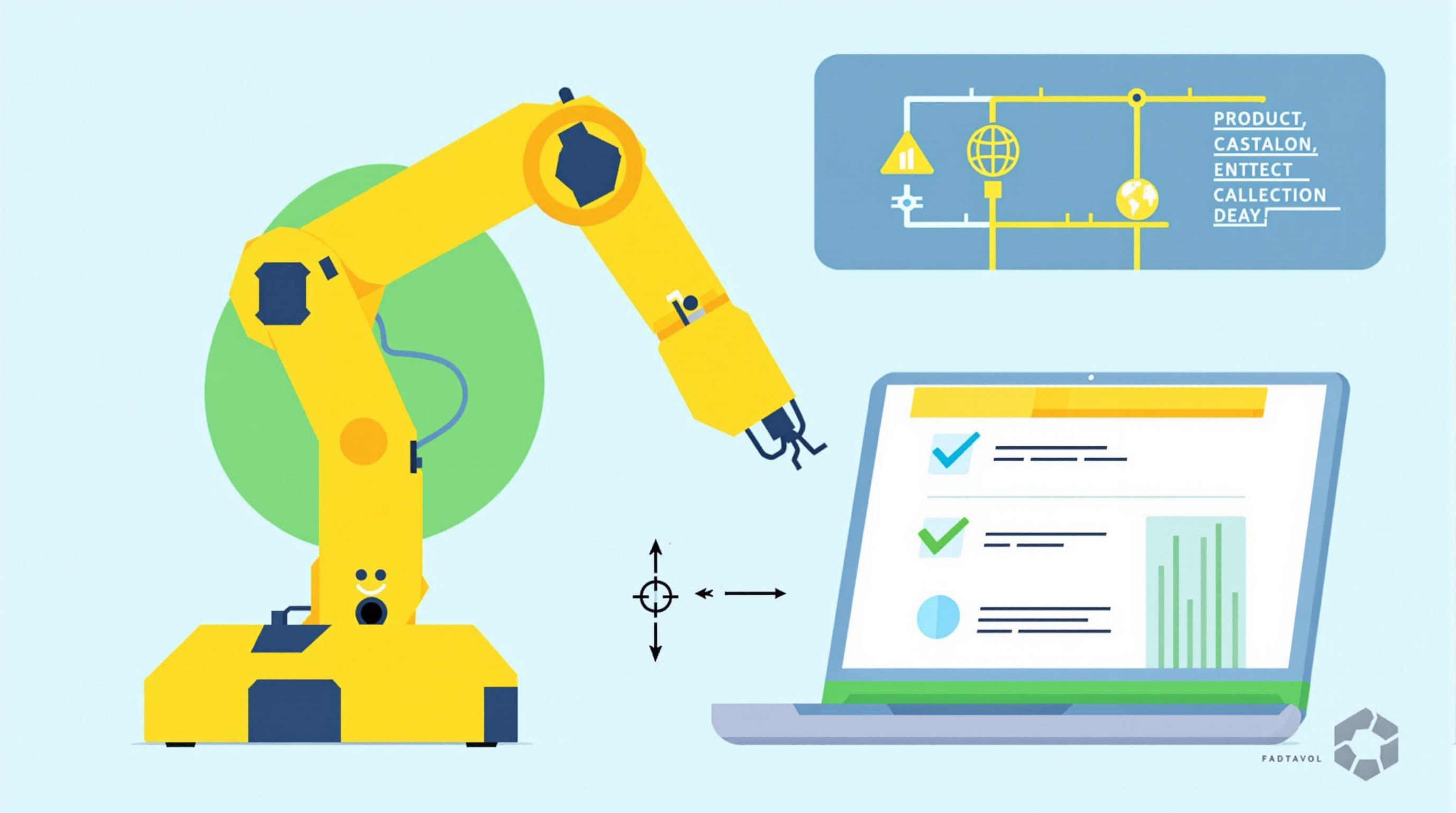Related Articles
- Top 6 Next-Gen B2B SaaS Engines Shaping Retention With AI-Powered Predictive Insights Since 2019
- Top 6 Emerging SaaS Onboarding Platforms of the Last Five Years That Actually Boost User Stickiness
- Top 8 Under-the-Radar Analytics Tools Launching Since 2019 That Outperform Big Names
- Top 7 Next-Gen Workflow Automation Platforms Revealed Comparing Game-Changing Features from the Last Five Years
- Top 6 Next-Gen Endpoint Security Solutions Since 2019 That Outsmart Modern Cyber Threats
- The Unseen Ripple Effect: How Obscure API Endpoints Influence Global Data Ecosystems in Unexpected Ways
10 Hidden Environmental Impacts of Workflow Automation That Companies Rarely Account For
10 Hidden Environmental Impacts of Workflow Automation That Companies Rarely Account For
10 Hidden Environmental Impacts of Workflow Automation That Companies Rarely Account For
1. Increased Energy Consumption from Data Centers
Workflow automation relies heavily on data centers to process and store vast amounts of information continuously. These data centers consume immense amounts of electricity, often sourced from non-renewable energy grids, leading to significant carbon emissions. Yet, many companies overlook the environmental cost of maintaining their automated processes running 24/7.
The demand for real-time data processing and cloud computing resources has grown exponentially, increasing the load on infrastructure. Although cloud providers are striving for greener solutions, not all companies assess the environmental footprint when scaling automation technologies. Understanding the energy origin and efficiency of data centers is crucial but often neglected in corporate sustainability plans.
Companies aiming to minimize their ecological impact need to scrutinize where their automated workflows run and consider partnering with providers using renewable energy or investing in on-site green infrastructure. Without such measures, the indirect carbon footprint of automation may silently balloon, offsetting gains from streamlined operations.
2. Electronic Waste from Frequent Hardware Upgrades
Automation technologies often demand specialized hardware, prompting frequent upgrades to maintain compatibility and performance. This cycle fosters electronic waste as outdated machines and components are discarded. The environmental repercussions of e-waste, including toxic material leaching and resource depletion, are significant yet rarely factored into corporate environmental assessments.
Hardware vendors frequently promote newer versions with enhanced speeds and features, indirectly encouraging companies to replace equipment instead of extending its lifecycle. While automation aims to optimize efficiency, the physical material costs and waste generation underpinning these improvements escape widespread attention.
Addressing this challenge involves implementing hardware recycling programs and opting for modular, upgradeable technologies that prolong device longevity. Companies should also incorporate the environmental costs associated with hardware turnover into their workflow automation strategies to create truly sustainable systems.
3. Increased Cooling Requirements Amplify Carbon Footprint
Data centers and server rooms critical to workflow automation generate considerable heat, necessitating advanced cooling systems to prevent equipment failure. These cooling facilities, often powered by fossil fuels, intensify overall energy usage and associated greenhouse gas emissions. Despite their importance, the environmental implications of such cooling are seldom included in automation impact assessments.
Older infrastructure in particular can be inefficient, relying on energy-intensive air conditioning rather than more sustainable alternatives like liquid cooling or passive ventilation. As companies expand automation capabilities, increased heat output and cooling demands rise in parallel, creating a hidden environmental cost layer.
Incorporating energy-efficient cooling solutions and leveraging natural climates (for example, cold regions for data center placement) can mitigate this impact. Awareness and transparent reporting of cooling-related emissions should become a standard part of workflow automation’s sustainability evaluation.
4. Software Bloat Leading to Inefficient Resource Use
As workflow automation systems evolve, they frequently accumulate redundant or overly complex code—known as software bloat—that wastes computational resources. This inefficiency drives servers to consume more power than necessary, indirectly increasing environmental impact. Surprisingly, companies rarely consider software optimization when calculating automation sustainability.
Automated processes can loop inefficiently or execute superfluous calculations, especially when legacy systems are integrated without refinement. These inefficiencies multiply as workloads scale, cumulatively escalating energy consumption and carbon output.
Maintaining lean and efficient software through regular audits, refactoring, and decommissioning outdated automation scripts can reduce unnecessary power demand. Sustainable software development is a critical but overlooked factor in minimizing the ecological footprint of workflow automation.
5. Increased Network Traffic Intensifies Infrastructure Load
Automated workflows often generate massive amounts of data traffic across corporate networks and the internet, increasing the burden on network infrastructure. Transmitting, routing, and storing this data require additional energy, which contributes to environmental degradation through associated emissions. This indirect consequence is frequently absent from companies’ environmental reporting.
High network loads can prompt infrastructure expansion and greater energy consumption, especially as companies push for faster, more reliable automated communications. Such growth without environmental consideration exacerbates the energy-intensity of digital operations.
Optimizing data flows, compressing transmissions, and minimizing unnecessary communication steps in automation can help curb network-induced energy use. Companies should integrate network traffic analysis into their automation environmental impact frameworks to identify and mitigate hidden carbon costs.
6. Neglected Lifecycle Emissions of Automation Software
Beyond active operations, the carbon footprint associated with the entire lifecycle of workflow automation software—including development, testing, deployment, and maintenance—is often overlooked. These stages involve significant computational efforts, travel for development teams, and energy consumption that compound environmental impacts.
Although less visible than operational emissions, the upstream and downstream activities integral to software existence accumulate greenhouse gases and consume natural resources. Corporate focus on runtime efficiency tends to ignore this broader, cradle-to-grave perspective.
Integrating lifecycle assessments (LCA) into automation projects can provide a more comprehensive understanding of environmental effects. Companies that consider development and maintenance emissions holistically can plan greener software strategies and reduce hidden ecological costs.
7. Impact on Employee Commutes and Facility Energy Use
While automation reduces manual tasks, it can indirectly reshape employee presence and facility usage patterns. For instance, some companies may expand physical offices or extend operation hours due to automated capabilities, increasing overall energy consumption and commuting emissions. This secondary effect often escapes corporate environmental audits.
Conversely, automation can enable remote work, reducing commuting emissions; however, increased home energy consumption must also be accounted for. The net environmental impact hinges on nuanced behavioral and infrastructural shifts triggered by workflow automation.
Corporations should adopt a holistic view, tracking how automation affects their workforce’s mobility and facilities. Supporting sustainable transportation, improving building efficiency, and encouraging green commuting options can mitigate these indirect but impactful environmental costs.
8. Resource Extraction for Automation Infrastructure
Building the sensors, servers, and networking devices essential to workflow automation necessitates extensive mining for rare earth metals and other finite resources. The environmental harm from extraction—including habitat destruction, water pollution, and energy-intensive processing—is substantial but remains rarely linked to automation’s footprint in company reports.
The increasing demand for advanced automation accelerates resource depletion, amplifying ecological strain globally. Sustainable sourcing and recycling of materials are vital yet underemphasized strategies to reduce the environmental toll of infrastructure growth.
Companies can advocate for and implement circular economy approaches by reclaiming rare materials from obsolete equipment and collaborating with suppliers who enforce responsible mining practices. Reflecting these resource impacts fosters more ethical and environmentally sound automation deployment.
9. Data Redundancy and Storage Waste
Automated workflows frequently generate duplicate data copies for backup, compliance, or integration, resulting in inflated storage needs. This unnecessary data redundancy demands additional server capacity and power, increasing energy consumption and carbon emissions. Firms seldom weigh these storage inefficiencies when assessing automation sustainability.
Data lifecycles lacking pruning and archiving strategies prolong storage duration and waste resources. As automation intensifies digital data dependency, unregulated storage growth presents a hidden environmental challenge.
Implementing data governance policies to eliminate redundant backups and promote efficient archiving can significantly reduce storage footprints. Prioritizing clean, minimal data retention aligns automation success with ecological responsibility.
10. Increased Electronic Surveillance and Privacy Monitoring Energy Use
Enhanced workflow automation often pairs with increased surveillance, logging, and privacy monitoring tools to ensure compliance and security. These functions generate extra computation and bandwidth demands that amplify energy consumption. The environmental costs of monitoring are subtle yet consequential and rarely appear in sustainability discussions.
Continuous data analysis and real-time alerts contribute to cumulative server loads and energy use. Heightened security postures, while critical, must balance operational needs with ecological mindfulness.
Optimizing monitoring systems for energy efficiency, employing event-driven triggers, and reducing unnecessary logging can help mitigate this hidden carbon footprint. Companies aware of these subtleties can design safer yet more sustainable automated environments.




